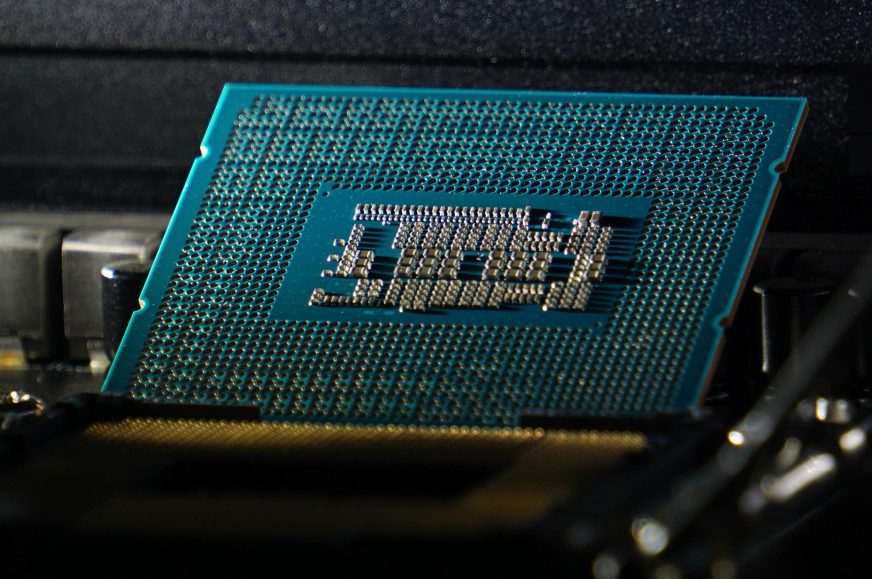High performance gaming processors with big cores only for LGA 1700?
Although releasing a fresh LGA 1851 desktop platform with brand new Arrow Lake processors this year, news are coming that Intel also plans another refresh of Raptor Lake processors as a plan B. But these chips, called Bartlett Lake, may yet be more interesting than one would expect. In fact, they might feature an entirely new, more powerful chip without E-Cores aimed at gaming performance, that would still run on the LGA 1700 socket.
The news that Intel is preparing Bartlett Lake processors representing the next successor to the Raptor Lake generation came last week from youtuber RedGamingTech. According to them, it’s supposed to be a cheaper complementary product parallel to the desktop Arrow Lake processors, or rather the whole platform is supposed to be cheaper thanks to using the LGA 1700 socket boards, not necessarily the processors themselves. And these processors are supposed to be aimed at gaming desktops.
Now, RedGamingTech has added more information on what Bartlett Lake could be like. Last time we reported that these would simply be rebranded Raptor Lake processors using the same chips, which would mean not much could change about them besides power draw, clock speeds and similar parameters. But according to RedGamingTech, some sources are talking about an alternative possibility that would be more interesting – namely that Bartlett Lake would use a new chip and would represent something more similar to what the eight-core Coffee Lake Refresh (Core i9-9900K) following the first six-core Coffee Lake (Core i7-8700K) was.
12-core Raptor Lake without any big.LITTLE?
The following is not something that would be reliable confirmed yet, so take this information with a grain of salt. However, RedGamingTech reports that according to some of their sources, Bartlett Lake uses a dedicated new silicon, albeit with the same core architecture, the same manufacturing process, and “the same ring bus”. Nevertheless, this chip should have large cores, or P-Cores, only with no little/efficient E-Cores. The count is supposed to be 12 cores / 24 threads. This would probably make a lot of people who don’t like the hybrid concept happy.
E-Cores work in such a way that they are always implemented in clusters of four, and this cluster as a whole replaces one big core in the processor, occupying one stop (node) on the ring bus. Raptor Lake with 8+16 cores has four E-Core clusters. So, theoretically, what you can do is take the Raptor Lake chip design and replace all four clusters back with a big core, giving you a 12+0 (12c/24t) configuration.
As mentioned, Bartlett Lake is reportedly targeting gaming PCs. In games, E-Cores in hybrid processors don’t really contribute much, but adding more P-Cores to the current eight might have a positive effect, even if only in some games and in future titles more than the current ones.
That Intel would bother with a new silicon is surprising, though perhaps the Coffee Lake Refresh, Comet Lake and Rocket Lake cases show that when Intel wants to hedge against next-generation manufacturing node setbacks, it’s willing to do this. Bartlett Lake, if it is indeed a 12(P-)core processor, might be a chip that is not intended just for desktop market according to RedGamingTech, but was also or even primarily intended for network infrastructure and embedded segments, i.e. for the NEX (Network and Edge) division. It would thus be a kind of low-end server platform, usable in NAS and similar products (in which case it might even not include integrated graphics and a multimedia block, which would make production cheaper).

It is possible that the idea to use the 12+0 Bartlett Lake die in desktop LGA 1700 boards as a gaming processor came only at some point later, or both options were considered when designing this chip. This could pay off big time for Intel if Arrow Lake has gaming performance issues, for example due to low clock speeds, which indeed seem to actually be troubling its predecessor Meteor Lake.
While a 12+0 processor might be interesting for gamers, it would probably lose out on overall multi-threaded performance, on the other hand. As we said, Intel’s hybrid concept is basically about taking up some of the “positions” in the processor occupied by single cores P-Cores and replace them with a cluster of four E-Cores instead, which doesn’t take up much more space and uses the same single node one the ring bus. The gains stem from the fact that although the CPU is thus deprived of one P-Core, the multi-threaded performance of one P-Core is only roughly equivalent to two E-Cores. However, the CPU gains four of those, so you get significant net multi-threaded performance gain.
If Bartlett-Lake were really a pure P-Core configuration, it would go in exactly the opposite direction, so we can expect it to roughly compete in non-gaming performance just with 8+8 Raptor Lake/Alder Lake processors, not the most powerful 8+16-core Raptor Lake Core i9 processors. However, Intel could theoretically re-enable AVX-512 on Bartlett Lake, which could make up for this thread count deficit a bit in some applications. Whether the company will be willing to do so is however quite doubtful, after seeing how adamantly they were blocking AVX-512 from being enabled in Alder Lake.
But again, all this should probably be taken with a grain of salt for now, it may still turn out that Bartlett Lake is actually just the same old silicon used by Raptor Lake (refresh) generation once again and there will be no E-Core removal. Also, it’s allegedly still not 100% decided yet whether Bartlett Lake will be released for desktop. But if it is actually confirmed to be a 12c/24t variant of Raptor Lake, it could end up being a very interesting CPU.
Source: RedGamingTech
English translation and edit by Jozef Dudáš
⠀







